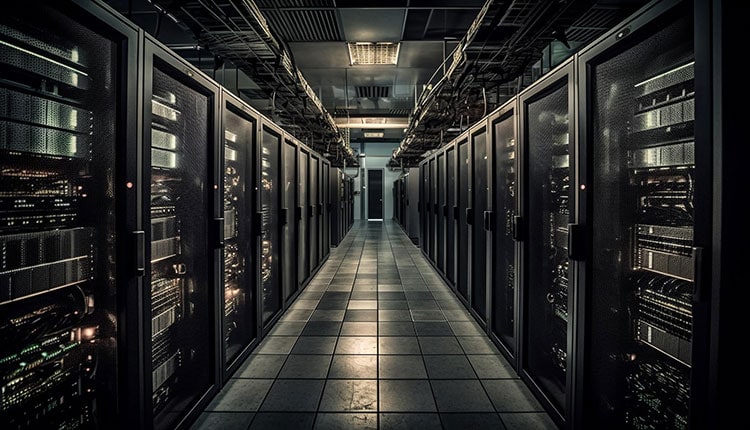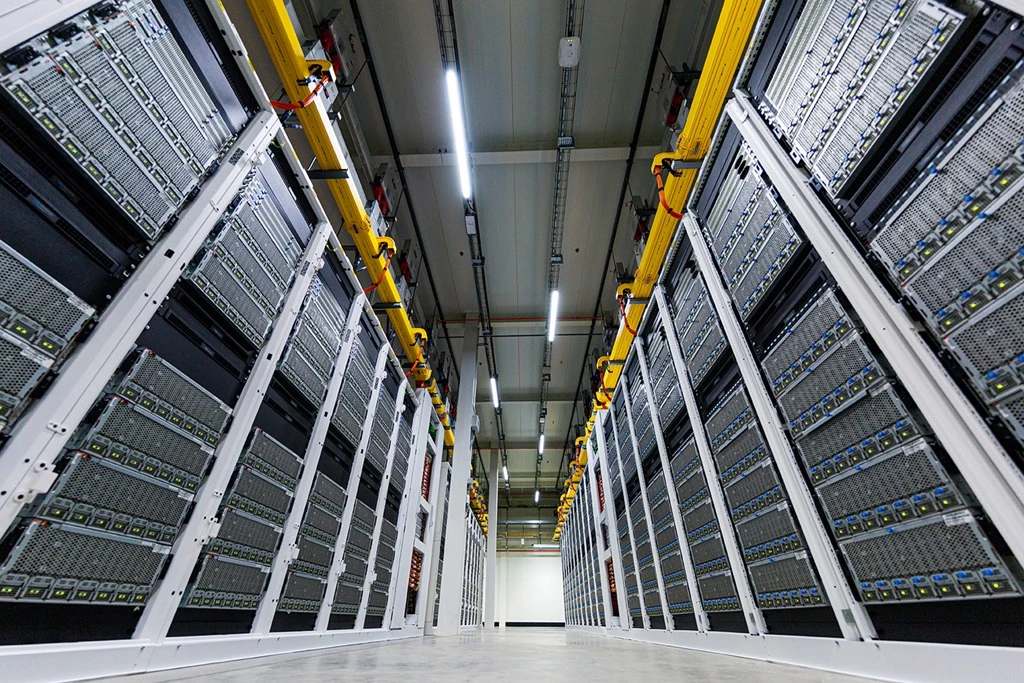Imagine your data center as a rapidly growing city. To ensure it functions efficiently, you need to anticipate future growth, allocate resources effectively, and avoid bottlenecks that could bring the city—or, in this case, your infrastructure—to a halt. That’s the essence of capacity planning.
In today’s digital-first world, where demands on data centers are evolving at lightning speed, businesses must stay ahead. This process isn’t just about adding servers or expanding storage. It’s about understanding trends, leveraging technology, and optimizing performance while keeping costs in check. Whether it’s handling peak traffic or integrating emerging technologies like AI, proper planning ensures seamless operations without waste.
If you’re aiming to improve efficiency, maintain uptime, and future-proof your data center, capacity planning is a critical strategy. Ready to dive deeper? Let’s explore in Danacloud how it works and why it’s essential for modern IT environments.
Data Center Capacity Planning: Key Concepts
| Concept | Description | Measurement | Challenges | Alignment with Business Needs |
|---|---|---|---|---|
| Data Center Capacity | The total amount of resources a data center can support, including processing power, storage, and network bandwidth. | Combination of processing power, storage capacity, and network bandwidth. | Balancing resources, predicting future needs, avoiding over/under-provisioning. | Essential for maintaining operational efficiency and supporting growth. |
| Processing Power | The computing power of the servers within the data center. | Number of servers, CPU speed, memory (RAM). | Supporting resource-intensive applications like AI and big data. | Matching processing power to application demands. |
| Storage Capacity | The total amount of data the data center can store. | Terabytes (TB), Petabytes (PB). | Managing increasing data volumes, especially with IoT and cloud applications. | Ensuring sufficient storage for current and future data needs. |
| Network Bandwidth | The amount of data that can be transferred in and out of the data center. | Data transfer rates (e.g., Gbps). | Handling high-volume transactions and peak traffic. | Ensuring smooth data transfer for business operations and customer experience. |
| Measuring Capacity Effectively | Evaluating processing power, storage, and network bandwidth using performance metrics and capacity utilization tools. | Monitoring CPU utilization, storage utilization, network traffic. | Accurately assessing resource usage and identifying potential bottlenecks. | Optimizing resource allocation and preventing performance issues. |
| Challenges in Managing Capacity | Difficulties in predicting future growth, balancing over/under-provisioning, maintaining energy efficiency, scaling infrastructure, and managing legacy systems. | N/A | Adapting to evolving technology and business demands. | Minimizing costs, maximizing performance, and ensuring business continuity. |
| Selecting Appropriate Capacity | Aligning data center capacity |
What Does Data Center Capacity Mean?
Data center capacity refers to the total amount of resources a data center can support, including processing power, storage, and network bandwidth. It’s a measure of how much data the center can handle and the number of workloads it can support efficiently. Understanding and managing capacity is crucial for ensuring optimal performance and preventing system overloads.
For example, a data center’s processing capacity is determined by the number of servers and their computing power. A company that runs data-intensive applications, such as AI or big data analytics, will need a higher processing capacity to meet performance demands. Similarly, storage capacity refers to the amount of data the data center can store. As businesses generate more data, especially with IoT devices or cloud applications, increasing storage capacity becomes vital.
Network bandwidth, another key component, determines how much data can be transferred in and out of the data center. A growing e-commerce platform that handles high-volume transactions during peak seasons would require a robust network capacity to ensure smooth customer experiences.
Effectively managing data center capacity ensures that resources are allocated efficiently, workloads are balanced, and the system can scale with future growth. Proper capacity planning prevents overloading, reduces costs, and improves service reliability.
Read more: What is an enterprise data center?
How to Measure Data Center Capacity Effectively
Measuring data center capacity effectively involves evaluating three key resources: processing power, storage, and network bandwidth. To start, processing power is measured by the number of servers and their capabilities, such as CPU speed and memory. For instance, a data center supporting AI applications will require more powerful servers compared to one running standard enterprise software.
Storage capacity is assessed by the total amount of data the center can hold. This can be measured in terabytes or petabytes, depending on the business needs. For example, a media company storing high-resolution videos will need significantly more storage than a small business running simple data applications.
Network bandwidth is measured by the amount of data that can be transferred in and out of the data center at any given time. It’s crucial for high-traffic websites or e-commerce platforms. Monitoring these factors regularly with performance metrics and capacity utilization tools helps ensure the data center meets growing demands without compromising on efficiency or reliability.
If you want to know about data center tiers come here.
Challenges in Managing Data Center Capacity
Managing data center capacity comes with several challenges, especially as businesses scale and technology evolves. As data generation increases and applications become more resource-intensive, data centers must adapt quickly to maintain performance and efficiency. The complexity of balancing resources, predicting future needs, and avoiding both over-provisioning and under-provisioning can strain operations. Failure to address these challenges can lead to higher costs, system slowdowns, or even downtime, affecting business continuity.
Key challenges include:
- Predicting Future Growth: Accurately forecasting future capacity requirements is difficult. A sudden surge in traffic, such as during a product launch or peak shopping season, can overwhelm resources.
- Over-Provisioning vs. Under-Provisioning: Striking the right balance is critical. Over-provisioning leads to wasted resources and higher costs, while under-provisioning can result in slow performance or outages, impacting customer experience.
- Maintaining Energy Efficiency: As capacity grows, so does energy consumption. Ensuring energy efficiency without compromising performance requires careful planning and advanced cooling technologies.
- Scalability Issues: As businesses move toward cloud computing or hybrid models, scaling data center capacity without disrupting operations becomes a major challenge.
- Managing Legacy Systems: Integrating new technologies with older infrastructure can lead to inefficiencies and capacity limitations, slowing down innovation and growth.
Effective capacity management requires continual monitoring, strategic planning, and the ability to adapt quickly to changing demands.
What Capacity Should I Select for My Business?
Not all companies need big, scalable data centers. On the other hand, some businesses are more demanding than others. This is where a good selection matters. Aligning data center capacity with business needs is essential for maintaining operational efficiency and supporting growth. It requires a clear understanding of the organization’s goals, future plans, and IT requirements. By matching capacity planning with business objectives, companies can avoid over-investing in resources or facing performance bottlenecks during critical periods. For example, an e-commerce platform anticipating a significant traffic spike during the holiday season must ensure sufficient processing, storage, and bandwidth to handle increased demand without interruptions.
Read more: What is a Colocation Data Center?
Steps to align data center capacity with business needs:
- Assess Current and Future Workloads: Analyze current workloads and forecast future requirements based on business growth, new projects, or seasonal trends. For example, a SaaS provider launching new services may need additional storage and network resources.
- Leverage Predictive Analytics: Use data-driven tools to predict capacity demands and plan accordingly, ensuring resources are allocated efficiently without overspending.
- Collaborate Across Teams: Align IT and business teams to ensure capacity planning supports key objectives, such as launching new products or scaling operations.
- Adopt Scalable Solutions: Implement scalable infrastructure, like cloud or modular data centers, to easily adjust capacity based on changing needs.
- Monitor and Optimize Regularly: Continuously monitor resource utilization and make adjustments to align with evolving business priorities, avoiding resource wastage or shortages.
Proper alignment ensures cost-efficiency, reliability, and scalability, directly supporting the organization’s success.
FAQ
-
Why is data center capacity planning important?
Capacity planning ensures a data center can handle current and future demands without overloading resources or wasting them. It helps maintain efficiency, reduce costs, and avoid downtime during unexpected surges or growing business needs.
-
What happens if a data center exceeds its capacity?
Exceeding capacity can lead to system slowdowns, performance issues, or even outages. This impacts business operations, customer satisfaction, and may result in costly emergency fixes or resource reallocation to restore functionality.
-
How can businesses predict future capacity needs?
Businesses can predict future capacity needs using historical data, workload trends, and predictive analytics tools. Regular monitoring and aligning capacity planning with growth projections help ensure resources are adequate for future demands.


